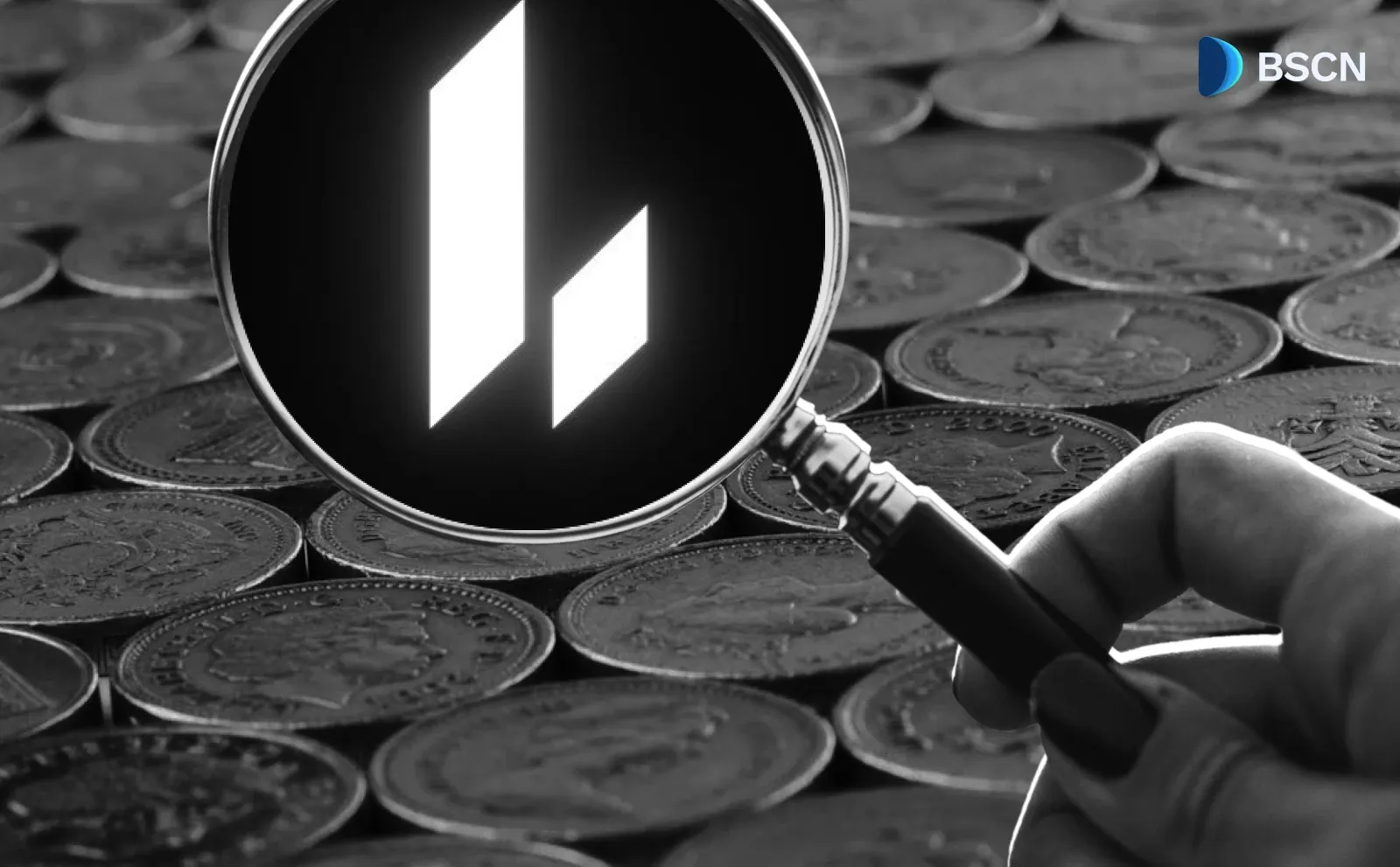News
(Advertisement)
Chainlink Introduces State Pricing to Improve Onchain Asset Valuation

Chainlink launches State Pricing to improve pricing accuracy for low-volume crypto and tokenized assets traded on DEXs.
Soumen Datta
August 4, 2025
(Advertisement)
Table of Contents
Chainlink introduced a new pricing method called Chainlink State Pricing to address a growing challenge in DeFi: how to reliably price assets that mainly trade on decentralized exchanges (DEXs) and have low activity on centralized exchanges (CEXs). This solution is now live on mainnet through Chainlink Data Feeds (push-based) and Chainlink Data Streams (pull-based).
Chainlink State Pricing calculates the value of tokens using liquidity data from onchain DEX pools, not just recent trade activity. This makes it especially useful for assets like liquid staking tokens (LSTs), liquid restaking tokens (LRTs), and tokenized real-world assets (RWAs) that often lack trading volume but still hold significant liquidity.
Why Chainlink Created State Pricing
The DEX-Centric Problem
Traditional Chainlink pricing models work well for tokens with high activity across CEXs and DEXs. These models rely on:
- Volume-weighted average price (VWAP): Uses recent trade volume to set price.
- Liquidity-weighted bid/ask (LWBA): Uses exchange order books to estimate mid-market price.
But these don’t work well when:
- Tokens are newly launched and not yet listed on CEXs.
- Assets trade infrequently but have deep liquidity pools on DEXs.
- Tokens represent RWAs that trade exclusively onchain.
Assets such as wstETH, GHO, ezETH, tBTC, and cbBTC often fall into this category. They may not see regular trades, but users can still make large transactions with little price impact—this indicates solid liquidity despite low activity.
What Is State Pricing?
Chainlink State Pricing calculates a token's price based on the reserves in DEX liquidity pools. This “state” of the pool reflects current market conditions, even when trades haven’t recently occurred.
Key Characteristics
- Continuous pricing: Price is always available, even if no trade has occurred.
- Forward-looking: Reflects real-time liquidity conditions.
- Flash loan resistant: Uses end-of-block data and robust outlier filters.
- DEX-focused: Works well with concentrated liquidity pools (e.g., Uniswap v3, Curve, Balancer).
How State Pricing Works
Chainlink uses a three-step process to calculate these prices:
1. Dynamic Pool Selection and Hybrid Weighting
- Liquidity pools across multiple DEXs are pre-screened based on activity and depth.
- A hybrid model weights pools by both historical volume and current liquidity near the market price.
2. State Price Computation
- Chainlink’s data providers query selected DEX pools at the end of each block.
- Prices are derived from token reserves using algorithmic models based on each DEX’s design (e.g., stableswap, CLMM).
- Prices are converted to USD using triangulation with fiat onramps and Chainlink's existing Data Streams.
3. Aggregation and Filtering
- Multiple price points are aggregated and passed through anomaly detection systems.
- Updates occur once per second with minimal latency, reducing the risk of manipulation via MEV or flash loans.
Who’s Using It?
Several major DeFi protocols are already integrating State Pricing:
- GMX: Uses it for accurate, real-time collateral pricing on its perpetual DEX.
- Lido: Applies it to price wstETH, a low-volume but highly liquid LST.
- Aave: Uses it for collateral pricing and liquidation logic for DEX-native assets.
- Curve: Acts as a data source due to its deep stablecoin liquidity pools.
Benefits for DeFi Protocols
- Improved risk management: More accurate pricing for assets with low trade volume.
- Enhanced collateral confidence: Especially for lending protocols and perp DEXs.
- DEX-native asset support: Opens the door to broader asset inclusion.
Risks and Considerations
Using DEX state data comes with specific risks:
- Smart contract risk: Bugs in DEX contracts could skew pool data.
- Bridge vulnerabilities: Hacks can affect token backing and thus distort implied prices.
- External dependencies: Some pools may rely on offchain or oracle-fed price inputs.
Chainlink Mitigations
- Aggregation across multiple pools reduces single-point failure.
- Filters and anomaly detectors remove outlier values.
- Consumers are urged to assess market depth and liquidity when integrating state price feeds.
Chainlink’s Broader Data Strategy
Chainlink now offers multiple pricing options:
- Push-based feeds: Regular updates for reference data.
- Pull-based streams: On-demand, low-latency pricing for high-frequency use cases.
- Trade-based and bid/ask pricing: For highly traded assets.
- State Pricing: For less active but liquid onchain assets.
Together, they make Chainlink’s oracle infrastructure more flexible for both DeFi and traditional finance platforms moving onchain.
Conclusion
Chainlink State Pricing gives the DeFi ecosystem a practical solution for pricing tokens that don’t trade often but still have onchain liquidity. This pricing method is already being used by top DeFi protocols and provides a clear, technically sound option for valuing DEX-centric and tokenized assets. It’s a strategic expansion of Chainlink’s data services, improving coverage and reliability across a wider range of assets.
Resources:
Chainlink State Pricing Announcement: https://blog.chain.link/state-pricing/
Chainlink Dcoumentation: https://docs.chain.link/
Chainlink blog: https://blog.chain.link/
Read Next...
Frequently Asked Questions
What is Chainlink State Pricing?
Chainlink State Pricing is a method for valuing tokens based on their liquidity in DEX pools, rather than trade history. It offers reliable pricing for low-volume, DEX-native assets.
How does State Pricing differ from Chainlink's other data methods?
Unlike VWAP or bid/ask models that rely on trade volume or order books, State Pricing uses token reserve data in DEX liquidity pools to calculate a forward-looking price.
Who is already using Chainlink State Pricing?
Major protocols like GMX, Lido, Aave, and Curve have adopted State Pricing to improve price accuracy and support a wider range of onchain assets.
Disclaimer
Disclaimer: The views expressed in this article do not necessarily represent the views of BSCN. The information provided in this article is for educational and entertainment purposes only and should not be construed as investment advice, or advice of any kind. BSCN assumes no responsibility for any investment decisions made based on the information provided in this article. If you believe that the article should be amended, please reach out to the BSCN team by emailing [email protected].
Author
 Soumen Datta
Soumen DattaSoumen has been a crypto researcher since 2020 and holds a master’s in Physics. His writing and research has been published by publications such as CryptoSlate and DailyCoin, as well as BSCN. His areas of focus include Bitcoin, DeFi, and high-potential altcoins like Ethereum, Solana, XRP, and Chainlink. He combines analytical depth with journalistic clarity to deliver insights for both newcomers and seasoned crypto readers.
(Advertisement)
Latest News
(Advertisement)
Crypto Project & Token Reviews
Project & Token Reviews
Comprehensive reviews of crypto's most interesting projects and assets
Learn about the hottest projects & tokens














